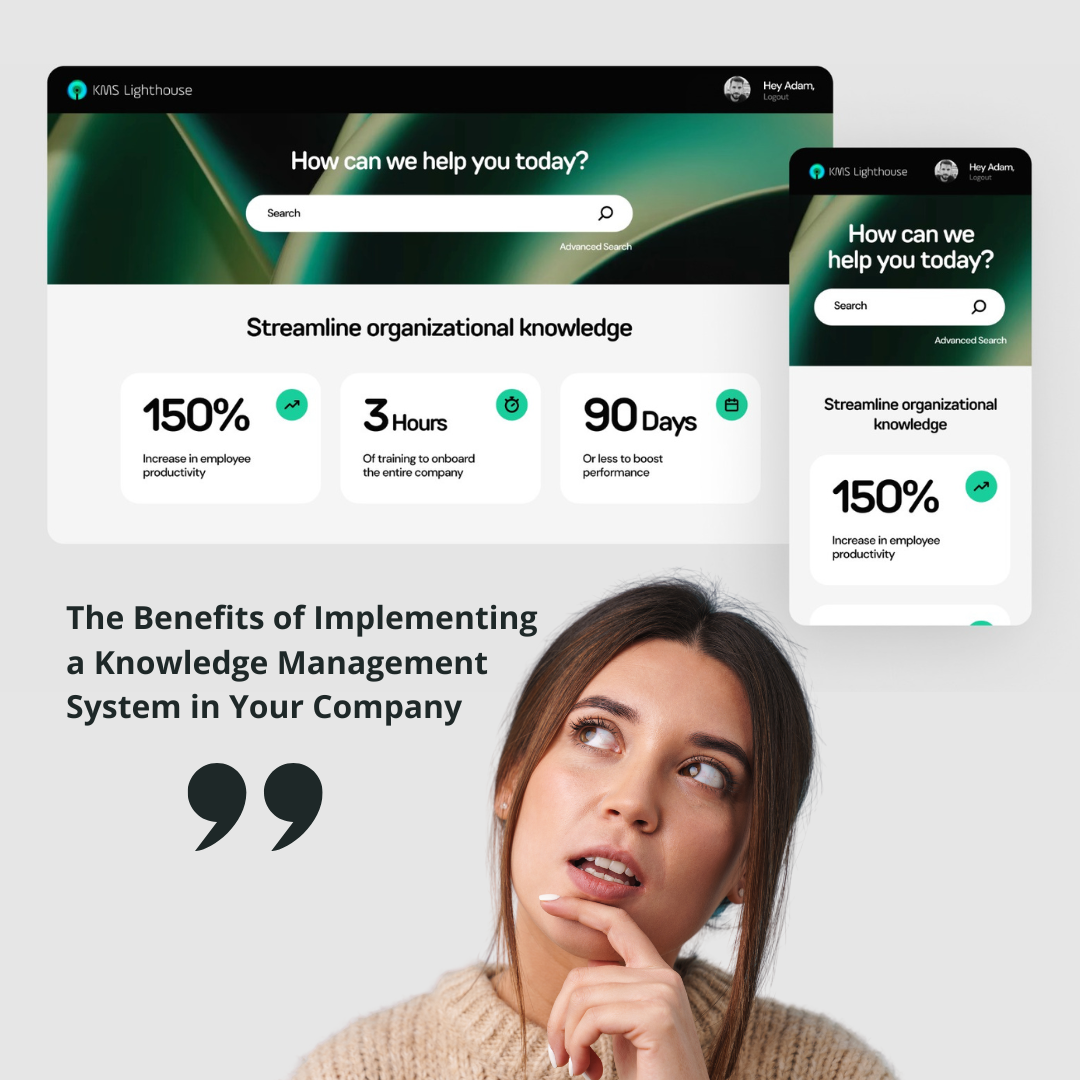If that sounds like a lot of work, it’s because it is. Is it worth it? Yes!
Aside from its people, your organization’s knowledge shapes and drives business activity and success. Adopting knowledge management tools helps your company stand apart from its competitors and meet rising customer demands and expectations. While it’s long been used in contact centers, knowledge management is just as essential to increasing team member expertise and improving organizational efficiency.
What is Project Knowledge Management?
In simplest terms, project knowledge (PKM) is knowledge management practiced in project situations. It creates a link between knowledge management and project management ideas and principles, capturing knowledge from projects in as close to real-time as possible and enhancing communication and project integration.
Key elements of project knowledge management include:
- Scope and objectives. What goals is a project designed to achieve? Smoother knowledge sharing, enhanced decision-making, and improved innovation are common objectives.
- Project team. Individuals with expertise in knowledge management, IT professionals, and subject matter experts typically drive knowledge management projects.
- Organizational assessment. Assessing your organization’s existing knowledge management practices, systems, and processes helps identify strengths, weaknesses, and opportunities for improvement.
- Knowledge management framework design. KM frameworks outline key components of knowledge management systems. They include processes for capturing, storing, organizing, and sharing knowledge and addressing roles and responsibilities, governance, and success metrics.
- Technology implementation. Knowledge bases, content management systems, search engines, and analytic tools are some of the most commonly used knowledge management tools and technologies.
- Process development and documentation. Identifying knowledge sources, creating guidelines for gathering and sharing knowledge, documenting best practices, and establishing quality control measures ensures workflows align with project goals.
- Change management. Communication and training initiatives focused on creating awareness, engaging stakeholders, and promoting knowledge sharing must be designed to facilitate KM adoption.
- Implementation and monitoring. The most effective KM strategies encourage enthusiastic support for sharing knowledge. Users should be trained in the benefits of rolling out KM initiatives. Organizations should monitor progress, measure KPIs, and obtain user feedback to ensure project effectiveness.
- Evaluation and continuous improvement. Routine evaluation of a project’s outcomes and impact can include gathering feedback, analyzing data, and identifying areas for improvement. Strategies, processes, and technologies should be adjusted as needed to enhance KM practices.
Benefits of Implementing Knowledge Management
Developing a clear and effective KM strategy comes with significant benefits, including:
Enhanced Decision-Making
Every business depends on good decision-making to grow and expand. Do your organization’s decisions have their desired impact? KM gives your teams a leg up in the decision-making process by providing them with quick and easy access to the information they need to make the best possible choices.
Increased Efficiency and Productivity
Few organizations feel as if they’re as efficient as they could be, especially in times of economic uncertainty or upheaval. KM can be a powerful tool in decreasing disruptions and eliminating duplicate work. It also reduces time spent searching for information and eliminates dreaded knowledge caretaker bottlenecks.
Improved Innovation and Problem-Solving
Any time you make it easier for team members to collaborate, innovation soars, and problem-solving becomes more creative. KM encourages and enables the sharing of ideas, which stimulates the changes needed to grow your organization and meet changing business needs.
Knowledge Preservation and Succession Planning
Enterprises that stay current with their industries and markets have a knack for staying on top. But what happens when key team members or executives retire or otherwise exit the company? KM lets you capture and preserve critical knowledge and ensures it’s available, even when people leave or change roles.
Accelerated Learning and Development
Today’s disrupted work environment has placed a new level of urgency on providing workforces, including those who work remotely, with the knowledge and skills required to do their jobs. Maintaining information in a static database no longer meets these needs. KM enables new and existing team members to acquire necessary knowledge and skills quickly, reducing learning curves and increasing efficiency.
Elevated Customer Experiences
Round-the-clock availability, interactive problem-solving, fewer call escalations, and an omnichannel approach to customer service have had a significant impact on customer service and satisfaction. Innovative KM tools help you stay ahead of the curve and meet customer expectations, increasing loyalty and trust.
Enhanced Organizational Agility
A central knowledge database lets your organization efficiently distribute critical information across business areas and practices. Your business is able to respond quickly to changing market conditions, make agile business decisions, and adapt to new technologies.
Risk Mitigation
Avoiding every potential threat is nearly impossible in today’s high-risk landscape. But you can manage and limit risk exposure. KM helps prevent errors and mitigate risks by capturing and sharing collective best practices and lessons learned. It also ensures your organization is compliant and enables you to avoid often hefty non-compliance fines.
Increased Competitiveness
A critical benefit of KM is that it allows your business to get the right information to the right people and the right time. You can quickly create, apply, and share intellectual capital, which improves efficiency and fosters innovation, two primary ways companies remain competitive.
Enhanced Employee Engagement and Retention
Last but certainly not least, KM enables you to give team members the information they need to do their jobs. It may sound like an obvious thing to do, but without knowledge management it’s not as easy to accomplish as you might think.
Easy access to crucial data contributes to employee engagement and happiness in several ways.
- KM imparts a feeling of empowerment, motivating team members to take ownership of their work and make informed decisions. And not having to rely on managers or co-workers increases confidence and a sense of autonomy.
- Easy access to information increases efficiency by helping people find the answers they need quickly, thereby reducing frustration and enhancing satisfaction.
- Having to search multiple places for information can lead to feelings of uncertainty and anxiety. KM reduces stress so team members can focus more on their work.
- Better decision-making leads to higher quality work and more efficient results. This improved job performance contributes to feelings of happiness and accomplishment.
- The more information people can access, the more they contribute to their learning and professional growth. Team members can use KM to acquire new skills, learn new topics, and stay up-to-date on industry trends.
- Equal access to information fosters team member collaboration. Colleagues come to enjoy sharing their information and expertise and lending support to fellow team members.
- Organizations that provide their people with data access foster a culture of trust and transparency. Employees feel valued and are more excited about engaging with organizational goals and visions.
How to Implement Knowledge Management
Knowledge management system implementation is made easier when you create a knowledge management implementation roadmap that:
- Assesses the current state of your organization’s KM. Start by identifying existing knowledge management practices, systems, and processes. Then evaluate their effectiveness and highlight any gaps or areas for improvement.
- Defines your KM goals and objectives and ensures they align with your organization’s overall knowledge sharing strategy.
- Conducts a stakeholder analysis that identifies all key stakeholders that your KM system will impact. This can include the C-suite, subject matter experts, and end-users.
- Establishes a dedicated project team to drive KM implementation.
Keep in mind that your KM implementation roadmap will vary from other organizations’ plans, reflecting your company’s unique size, culture, and industry.
Reap the Benefits of Knowledge Management
When you choose KMS Lighthouse to achieve your knowledge management goals, you’re in good company. For instance, when Israel-based Ayalon needed to streamline agent-assisted services for its growing customer base, it used our AI-driven solution to reduce call times and decrease mid-call interruptions. The insurance and financial provider then expanded its use of KMS Lighthouses to other aspects of its business.
Balancing people, processes, and technologies is exponentially easier when you invest in knowledge management. KMS Lighthouse knows when, how, and where to deliver the knowledge your organization needs, allowing you to use collective intelligence to support growth and boost profits.
Contact us to learn more and get started on creating a lasting and effective knowledge management strategy.







